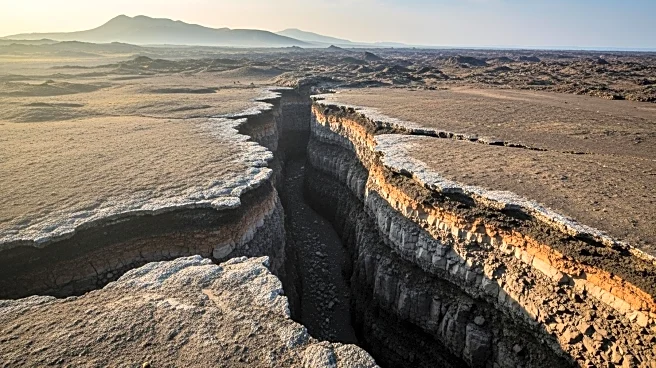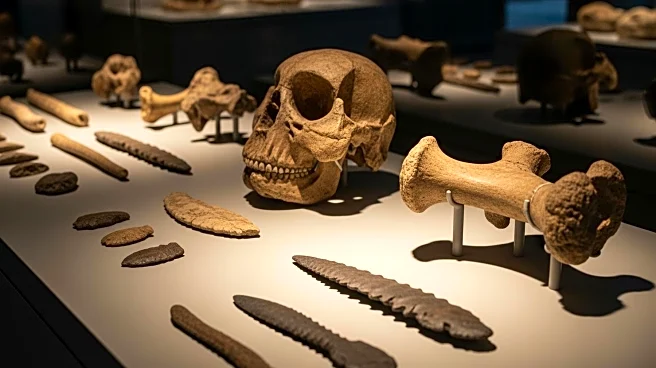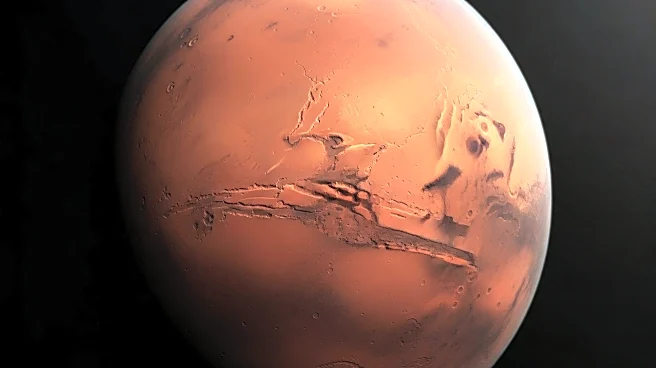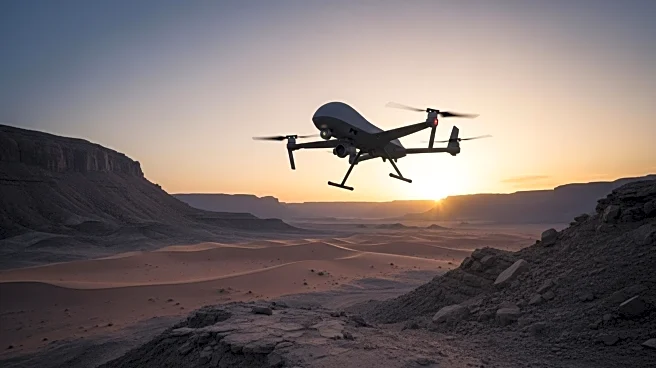What's Happening?
The East African Rift System is undergoing significant geological changes, potentially leading to the formation of a new ocean. The rift stretches from Mozambique to the Red Sea, with the African and Somali tectonic plates moving apart at a rate of 6-7 millimeters per year. This process, which typically unfolds over millions of years, is marked by episodic bursts of activity, such as the 2005 dyke intrusion in Ethiopia's Afar region. Scientists observe the transition from continental rifting to oceanic spreading, similar to the formation of the Atlantic Ocean.
Why It's Important?
The geological activity in East Africa has profound implications for the region's future. The formation of a new ocean could alter trade routes, create new marine habitats, and reshape coastlines. Economically, countries along the rift may benefit from new ports and trade opportunities. However, the region faces challenges related to infrastructure development, as active rift faults pose risks of earthquakes and volcanism. Understanding these geological processes is crucial for planning and mitigating potential impacts on communities and ecosystems.
Beyond the Headlines
The East African Rift serves as a natural laboratory for studying continental breakup and plate tectonics. The rapid changes observed provide valuable data for geologists, enhancing knowledge of Earth's dynamic processes. The eventual formation of a new ocean highlights the planet's ever-changing nature, reminding us of the long-term geological forces that shape landscapes and ecosystems.












